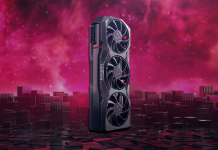Alas it looks like the next generation SATA interface has run into problems in the very last second. Several motherboards, among others for Intel’s P55 platform, has been enriched with SATA 6Gbps support but since the P55 chipset doesn’t bring it they need third-party chips to make this possible. After reports on problems at Silicon Image and its SATA 6Gbps controllers the majority of motherboard makers turned to Marvell, which seemed like a smart move.
In the last second it has turned out that Marvell’s SATA 6Gbps controller suffers from both performance stability problems that are now risking to slow down the introduction of the new interface, especially among Intel users.
According to sources both ASUS and Gigabyte has chosen to remove their Marvell 88SE9123 chips from nearly all of their coming P55 motherboard. A drastic move this close to launch, which also implies that the problems with the SATA 6Gbps controller was not something you solve with a simple software update.
Even if there is very little information on the specifics of the problem with Marvell’s SATA controllers, there are speculations. It seems like motherboards with 6 PCB layers are having bigger problems since ASUS P55 Premium will still launch with SATA 6Gbps support and that Gigabyte is planning an X58 successor with SATA 6Gbps support already in August, Both these boards use 8 layer PCBs.
“The extra room engineers would have to run traces on an 8 layer board could help alleviate the hardware malfunctions. It’s also possible that the speed of 6 Gb/s over a single differential pair may be causing some interference issues of its own. Higher-end boards may be able to retain the chip with additional heatsinks (layers of large block traces to help dissipate heat along the PCB) along the SATA trace paths, acting as extra shielding. At this point, it’s all speculation though.” – PCPer
The health of and wellbeing of Marvell’s SATA 6Gbps controller remains undisclosed, but sadly it seems we will have to wait even longer for broad support for the new storage interface. At the same time, we’re still waiting for the first retail products supporting the technology offering up to twice as high transfer rates as the current standard.


















